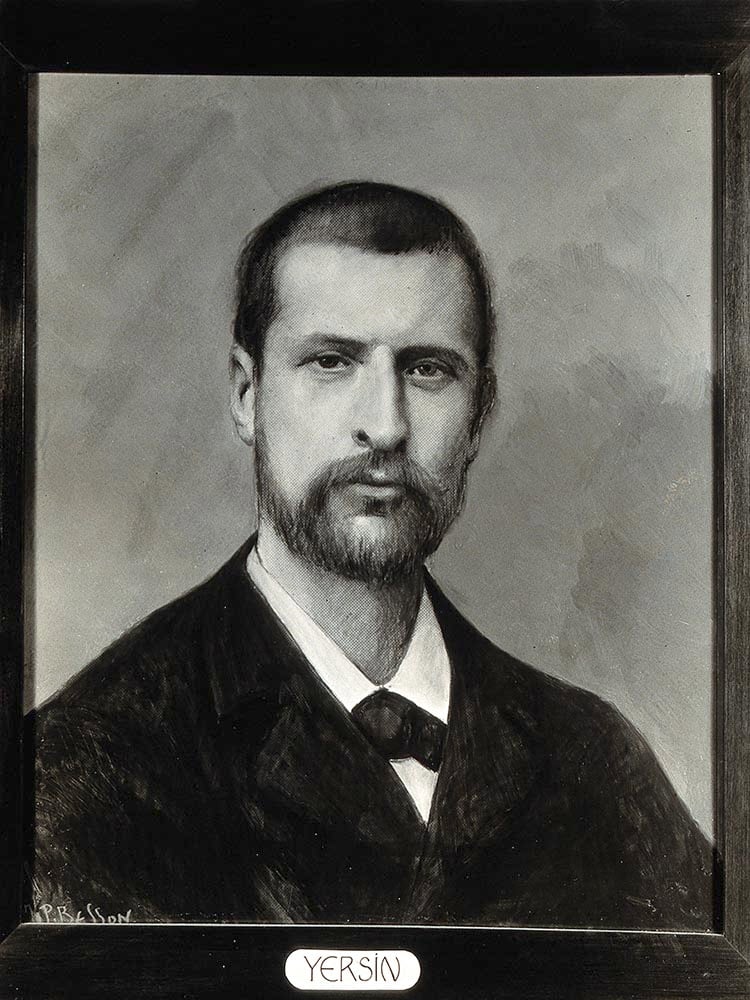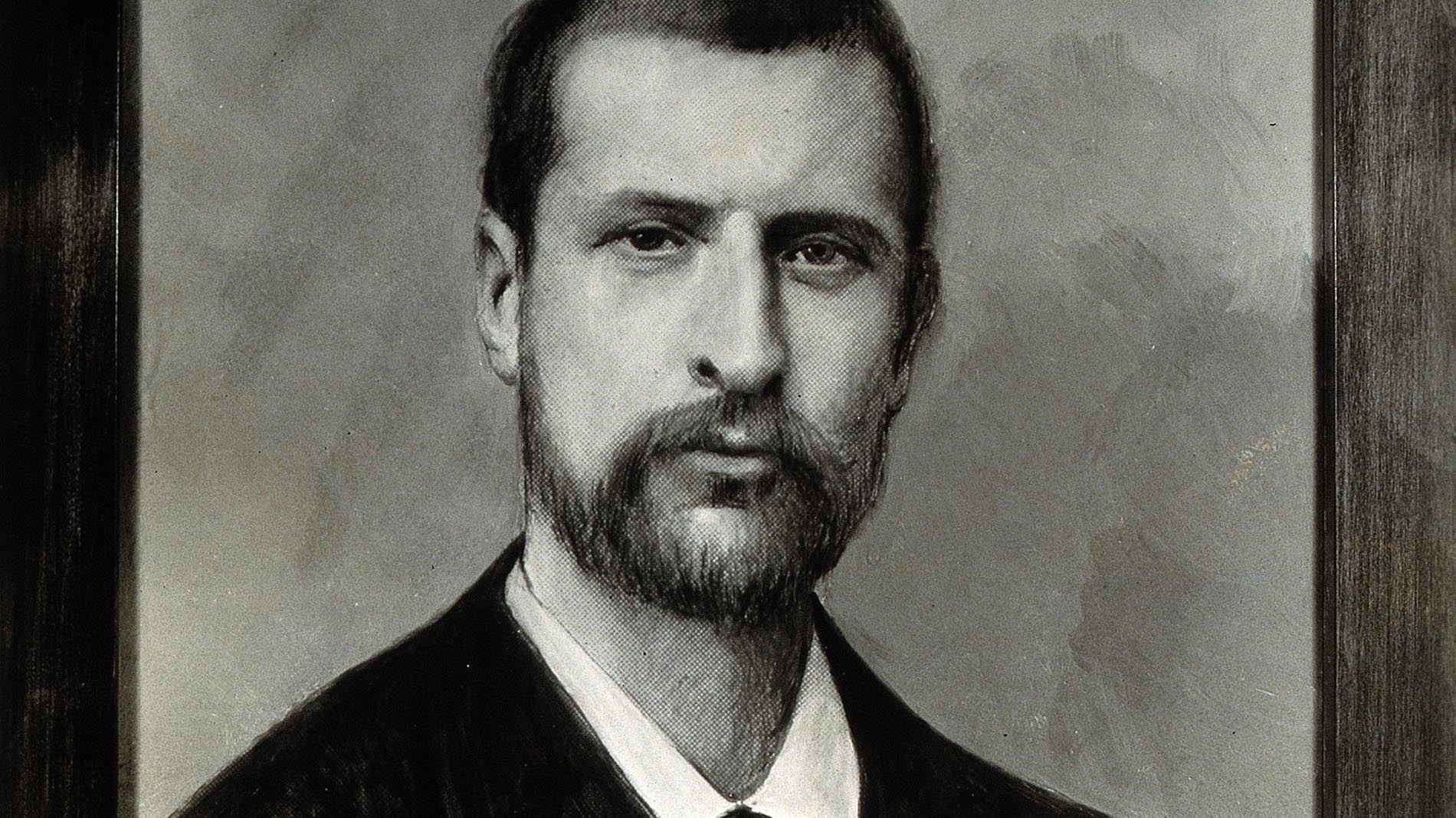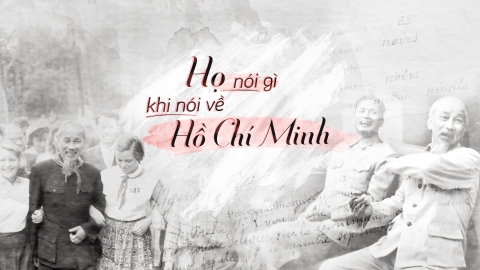“…life without travel is no life”
Alexandre Yersin's full name is Alexandre Émile Jean Yersin, born on September 22, 1863 in Switzerland; the youngest of three children in a Protestant family. At the age of 25, after receiving his Doctor of Medicine degree, Yersin applied for French citizenship, because at that time only citizens of the French Republic were allowed to practice medicine. During his time studying medicine in France and Germany, Yersin read the news, learned about expeditions and looked at maps of Indochina. Those images and stories aroused Yersin's passion for discovery. He chose David Livingstone - a Scottish missionary and explorer - as his role model.

Portrait of Alexandre Yersin
Yersin was noticed by the genius Louis Pasteur and accepted to work at the prestigious Pasteur Institute in Paris. But his adventurous spirit made him insist on quitting his job to become a sailor on an ocean liner, “despite having no experience at sea”.
Yersin wrote to his mother: “I will not be sad if I have to leave Paris because I am sick of theater, the upper class disgusts me, and life without leaving is no life at all.” At the age of 27, Yersin left Paris for Indochina.
Giving up a promising future at the Pasteur Institute in Paris, Yersin chose a path of drifting at sea, weaving through the rugged mountains along the Truong Son range, and living in ethnic minority villages to satisfy his passion for exploration, even though at times he almost lost his life.
Every time he went on an expedition and returned to France, Louis Pasteur invited him to dinner and listened to his reports. Pasteur asked him to do everything to the best of his ability to "make himself famous in the world and help humanity." Obeying his teacher, Yersin packed his belongings and boarded a ship to travel thousands of nautical miles, despite unpredictable storms.

In Vietnam, he worked as a doctor on ships between Saigon, Manila, and Hai Phong. Before that, in 1902, the Governor General of Indochina, Paul Doumer, asked Yersin to go to Hanoi and establish the Indochina Medical and Pharmaceutical School (the predecessor of Hanoi Medical University). In the weekly letters that Yersin wrote to his mother from Vietnam to Switzerland, he said that he taught zoology, physics, and other subjects himself because the school did not have enough lecturers at that time.
But Hanoi could only keep him for two years. He returned to Nha Trang, carrying out a series of scientific and exploratory days throughout the mountains and forests of Indochina. He lived a life filled with explorations and achievements. Yersin traveled a lot, discovered a lot, and almost every corner of Laos, Vietnam and Cambodia had his footprints. High mountains, deep valleys, wild animals, diseases... never discouraged him.
Power, money and science
The world knows Alexandre Yersin as a famous explorer, scientist, bacteriologist, and doctor, but in Vietnam and Indochina, he was also a colonial official. Yersin was rich and knew how to enjoy life, but whenever necessary, he was willing to give up that enjoyment for the people and for science.
Alexandre Yersin's favorite means of transportation was the bicycle. But in fact, as early as 1910, he wanted to buy an airplane. Because Indochina had no airports, he had to give up this idea.
As a person who loves to explore and pioneer in new fields, in 1932, when the first French airline flight connecting Saigon - Paris was opened, Yersin used an airplane to travel. In March 1940, Yerin was 77 years old, he flew back to France to attend the annual meeting of the Pasteur Institute in Paris. It was a very difficult journey. On May 30, 1940, the last plane took him back to Vietnam, before the German army entered Paris.
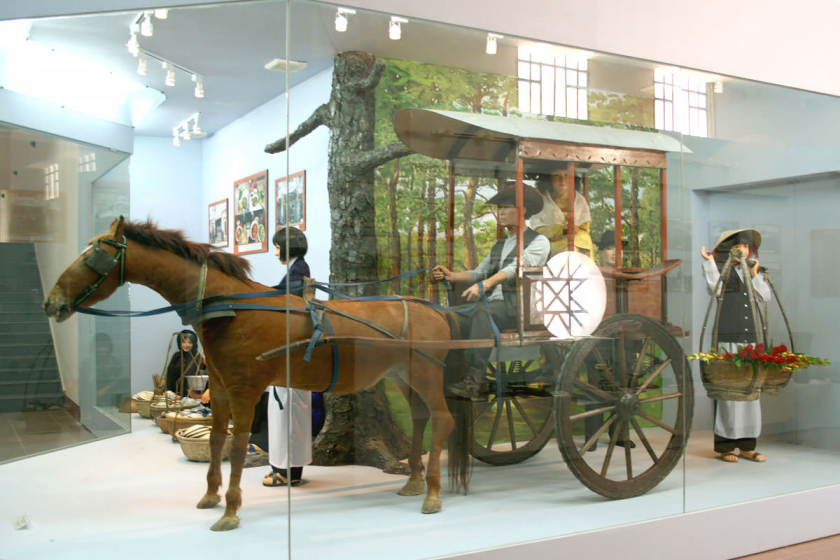
Dr. Yersin's carriage, at the Alexandre Yersin Museum
In 1943, due to weak lungs, he used a cyclo. When mentioning Yersin, everyone imagines a modest old man dressed shabbily riding an old bicycle, forgetting that Alexandre Yersin annoyed the government officials of that time with his modern cars.
While the Resident in Nha Trang did not have a car, Yersin sent to France to buy a five-horsepower Serpollet, a Clément and a motorboat. When he needed money for research projects or to help the poor, he sold his car and returned to his bicycle. During his expeditions, he used horses, elephants or walked, not hammocks or palanquins like French or Vietnamese officials often used when going on inspection trips.
Yersin became a millionaire by growing rubber trees for the Michelin tire company and was a major shareholder of HSBC bank. He once said: "I have to earn money in other ways, I cannot hold the money of the patients." All of his profits are still there, secretly transferred regularly to a charity fund and a scientific research fund.
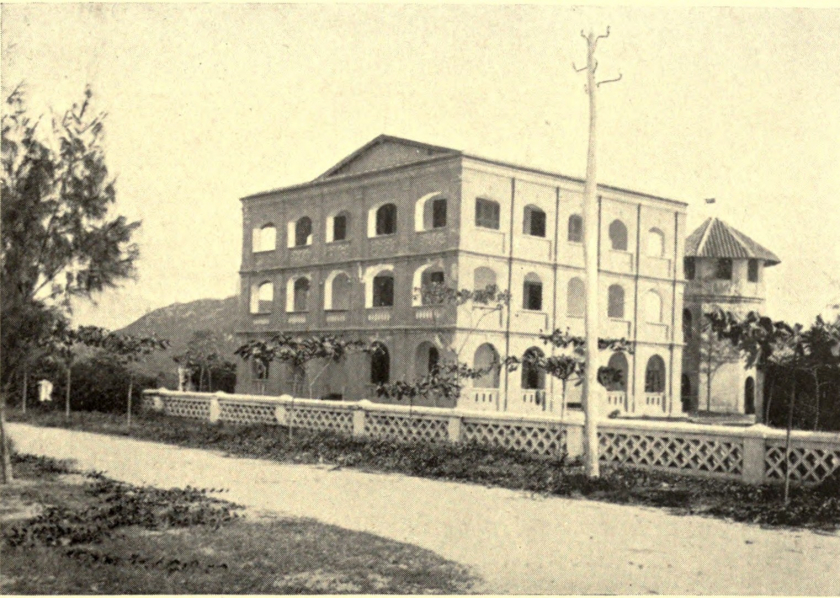
Yersin's private home in Nha Trang, now the Ministry of Public Security Guesthouse.
Although he was rich, in Nha Trang, Yersin preferred to live with poor fishermen. In 1895, he used his own money to buy an abandoned two-story bunker near Con hamlet and Cai river mouth to build his own house. According to Dai Nam Nhat Thong Chi volume XI about Khanh Hoa, it was a very old border post. Fishermen in Con hamlet often called this building "Lau Ong Tu" - at that time his official position was still Quan 4, later becoming Quan 5.
Ong Tu's Tower - a bunker about 7.5 meters on each side that has now become a rest house of the Ministry of Public Security - became Dr. Yersin's favorite place to sightsee. Each floor in the house has a wide corridor surrounding it, which can be walked along to observe the outside. Yersin arranged the ground floor as a dining room, the first floor as an office and the second floor as a bedroom. Later, on the roof of the house, he added a circle to set up a telescope.
50 years of dedication and love for Vietnam
In June 1893, Yersin led an expedition on the Saigon - Di Linh route to learn about the lives of ethnic minorities, resources and land potential. During this trip, Yersin discovered the Lang Biang area, which later became an ideal resort for Europeans, and then became Da Lat today. Yersin once wrote in the Indochina newspaper: “June 21, 1893: I was deeply moved when I crossed the pine forest and came across a vast, undulating, wild, treeless plateau, shaped like a sea violently stirred by a series of undulating green waves. The Lang Biang mountain range stood majestically on the northwest horizon of the plateau, adding to the majestic scenery”.
Just like that, with his great vision, Yersin participated in urban planning projects across Vietnam. He discovered and built Sapa, Da Lat, Ba Na... into tourist resorts; participated in urban planning of central areas of Saigon, Hanoi, Nha Trang, Da Nang, Hai Phong,...
Doctor Alexandre Yersin was also the one who brought rubber trees, tomatoes, carrots, Western flowers in Da Lat, coffee, cashews, pepper... to Vietnam - seeds that our country now exports, bringing in billions of dollars. He also raised sheep, grew grapes in Phan Rang; raised ostriches in Ninh Hoa, and experimented with large-scale coffee planting in Lam Dong, Dak Lak and Pleiku.
Trusted by the French government at that time, he always requested the construction of many schools in the provinces of Vietnam, and proposed to invest money to build the North-South railway from Hanoi station to Saigon station. The National Highway 1A at that time - a tiny dirt road with a width of only 2-3 m from the Nguyen Lords' time - was "drawn" by him to be stone-paved, paved, expanded and upgraded so that cars could run. The Phan Rang-Da Lat railway was also advised by him for Governor-General Doumer to do. The meteorological stations from Sapa to Mau Son and Bach Ma, the lighthouses at sea that we often say "built by the French" were chosen by him. Whatever he could think of, he did everything for the Vietnamese people.
In the medical field, Yersin quietly devoted his whole life to world science in general and to the preventive medicine sector in Vietnam in particular. He laid the foundation for the construction of the Nha Trang Pasteur Institute and the system of Pasteur Institutes in Indochina, bringing about enormous effectiveness in disease prevention for the Indochina region and Asia.
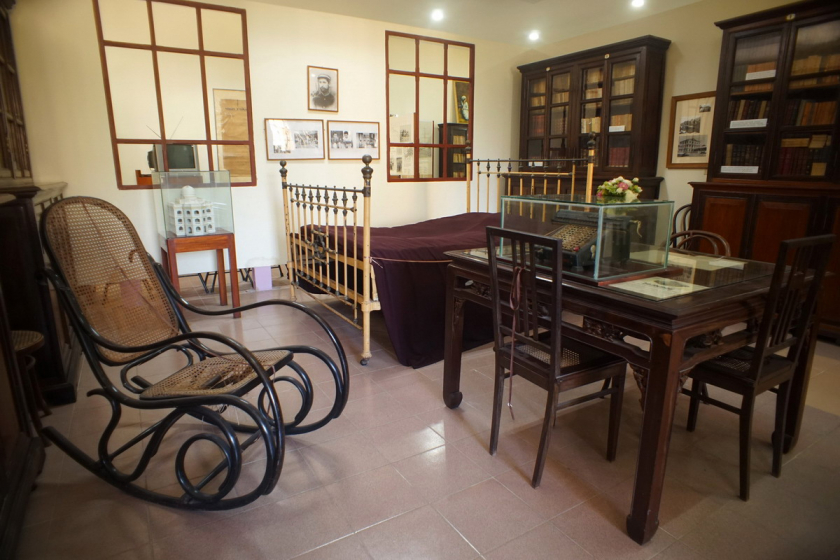
A corner of the exhibition in the Alexandre Yersin Museum in Nha Trang (Khanh Hoa).
Dr. Alexandre Yersin's affection for the Vietnamese people was sincere and simple. Once, some children came into his house to watch a movie and played with precious flower pots. The servants wanted to scold him, but he said: "Don't yell at children, they will be scared when they hear loud voices." Once, he was driving a car on the road, a careless citizen crashed into his car and had an accident. He immediately ran down to help them bandage, asked for their forgiveness, and resolutely returned the car to the Government and rode his bicycle, because according to him, "the people of this country are not used to the law, so they travel freely. If I collide with them on my bicycle, I won't cause any casualties."
Fishermen had a habit of getting drunk, arguing, quarreling, cursing, and even fighting. Yersin quietly took out his camera and recorded those unpleasant things. Afterwards, he invited the people of Con hamlet to watch the film and asked them if it was good or not, or beautiful. Everyone was embarrassed. Thanks to that, the Con hamlet at that time almost stopped having drunkenness and cursing.
While many Vietnamese intellectuals went to France to enjoy the available civilization of a foreign land, he was like a fish swimming upstream. He said, "I will forever be a French citizen, but I love Vietnam and will serve them with my life and soul."

Statue of Alexandre Yersin in Nha Trang
In his will, he wrote, “I want to be buried in Suoi Dau, in a very small grave, face down, with my head facing the sea. Mr. Bui Quang Phuong (a long-time colleague) should not let anyone take my body to another country. I would like to donate all my assets to the Pasteur Institute and my long-time colleagues who have worked with me.”
His funeral in 1943 was the largest funeral in Vietnam at that time. In his last moments, he asked his butler to lead him to the window, look out to sea, and then breathed his last. Hearing the news of his death, the people of Nha Trang abandoned all their jobs to prepare for his funeral. Ships at sea hurriedly docked at Con hamlet, stopping all fishing activities for many days. Female fishmongers gave up all their fish sauce, money, fame and fortune every day, took off their familiar conical hats to wear white mourning scarves on their heads, and took to the streets to see him off.
Commemorating the 79th anniversary of the death of Dr. Alexandre Yersin
On March 1, 2022, the International Livestock Research Institute (ILRI) in collaboration with a number of embassies, research institutes, and universities in Vietnam introduced the documentary "The Extraordinary Life of Alexandre Yersin (1863-1943)". The film is not only a commemorative gift for the 79th anniversary of the death of the famous physician with a 50-year love for Vietnam, but also helps inspire young people - especially young people - working in the field of medical research and development, applying the One Health approach to help solve diseases transmitted from animals to humans, especially in the context of many emerging diseases such as the current Covid-19 pandemic.
This documentary directed by Stéphane Kleeb, produced by Vitascope Independent Film & Video Productions GmbH, highlights Dr. Yersin's career highlights in Vietnam, discussing some of the lessons learned from his interdisciplinary research and work serving the local community.
On the evening of Saturday, March 5, Midnight Talks No. 29 also held a talk with the topic: "Alexandre Yersin - Life, legacy and mark in Vietnam", to find out the reasons why a talented doctor with a bright future like Alexandre Yersin chose to stay in the S-shaped land for 50 years of his life; thereby better understanding the contributions and marks he left here during this time.
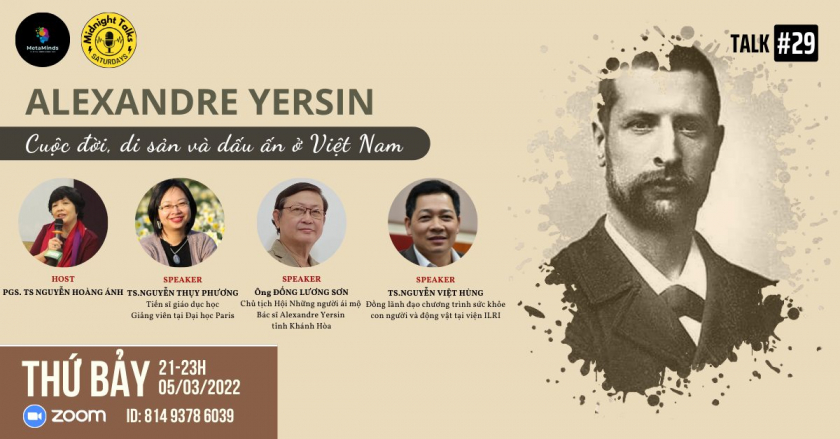
More information
Watch the documentary "The Extraordinary Life of Alexandre Yersin" atThis
Details of the talk show “Alexandre Yersin - Life, legacy and mark in Vietnam” atThis





